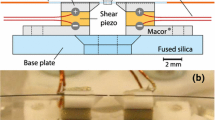Abstract
Thermally induced depolarization is known to be the principal factor limiting the usage of Faraday devices in laser radiation with high average power. In a number of practically important cases, the major contribution to the depolarization in Faraday devices is inhomogeneous Faraday rotation due to the temperature dependence of the Verdet constant. At the moment there are no satisfactory solutions to this problem. In this work a new scheme of a Faraday isolator with compensation of the contributions to thermally induced depolarization from the temperature dependence of the Verdet constant and thermally induced birefringence was proposed. The efficiency of using the proposed scheme and comparison with known schemes is analyzed analytically and numerically on an example of two magneto-optical crystals: TGG at cryogenic temperature and EuF2 in critical orientation at room temperature in which the contribution to thermally induced depolarization from non-uniform Faraday rotation due to the temperature dependence of the Verdet constant is major.



Similar content being viewed by others
Data availability
The data that support the findings of this study are available from the corresponding author upon reasonable request.
References
O. Slezak, D. Vojna, J. Pilar, M. Divoky, O. Denk, M. Hanus, P. Navratil, M. Smrz, A. Lucianetti, T. Mocek, Opt. Lett. 48(13), 3471 (2023)
I.L. Snetkov, A.V. Voitovich, O.V. Palashov, E.A. Khazanov, IEEE J. Quantum Elect. 50(6), 434 (2014)
E.A. Khazanov, Phys. Usp. 59(9), 886 (2016)
E.A. Mironov, I.L. Snetkov, A.V. Starobor, O.V. Palashov, Appl. Phys. Lett. 122, 10 (2023)
I. Snetkov, J. Li, Magnetochem. 8, 12 (2022)
D.S. Zheleznov, A.V. Starobor, O.V. Palashov, E.A. Khazanov, J. Opt. Soc. Am. B 29(4), 786 (2012)
R. Yasuhara, I. Snetkov, A. Starobor, E. Mironov, O. Palashov, Opt. Express 24(14), 15486 (2016)
I.L. Snetkov, D.A. Permin, S.S. Balabanov, O.V. Palashov, Appl. Phys. Lett. 108(16), 161905 (2016)
D.S. Zheleznov, E.A. Khazanov, I.B. Mukhin, O.V. Palashov, A.V. Voitovich, IEEE J. Quantum Elect. 43(6), 451 (2007)
I.L. Snetkov, IEEE J. Quantum Electron. 54(2), 1 (2018)
E.A. Khazanov, Quantum Electron. 29(1), 59 (1999)
I.L. Snetkov, O.V. Palashov, I.B. Mukhin, E.A. Khazanov, Opt. Express 19(7), 6366 (2011)
I.L. Snetkov, O.V. Palashov, Appl. Phys. B 109(2), 239 (2012)
S. Matsumoto, S. Suzuki, Appl. Opt. 25, 12 (1986)
I. Snetkov, A. Yakovlev, Opt. Lett. 47, 7 (2022)
A. Yakovlev, I. Snetkov, O. Palashov, Opt. Mater. 77, 127–131 (2018). https://doi.org/10.1016/j.optmat.2018.01.027
E.A. Mironov, A.V. Voitovich, A.V. Starobor, O.V. Palashov, Appl. Opt. 53(16), 3486 (2014)
C.F. Buhrer, Opt. Lett. 14, 21 (1989)
E.A. Khazanov, O.V. Kulagin, S. Yoshida, D. Tanner, D. Reitze, IEEE J. Quantum Elect. 35(8), 1116 (1999)
I.L. Snetkov, IEEE J. Quantum Electron. 57(5), 7000108 (2021)
M.J. Tabor, F.S. Chen, J. Appl. Phys. 40, 7 (1969)
E. Khazanov, N. Andreev, O. Palashov, A. Poteomkin, A. Sergeev, O. Mehl, D. Reitze, Appl. Opt. 41(3), 483 (2002)
A.V. Mezenov, L.N. Soms, A.I. Stepanov, Thermooptics of Solid-State Lasers (Mashinebuilding, Leningrad, 1986)
R. Peters, C. Krankel, S.T. Fredrich-Thornton, K. Beil, K. Petermann, G. Huber, O.H. Heckl, C.R.E. Baer, C.J. Saraceno, T. Südmeyer, U. Keller, Appl. Phys. B 102(3), 509 (2011)
E.A. Mironov, O.V. Palashov, I.L. Snetkov, S.S. Balabanov, Laser Phys. Lett. 17(12), 125801 (2020)
I.L. Snetkov, R. Yasuhara, A.V. Starobor, E.A. Mironov, O.V. Palashov, IEEE J. Quantum Electron. 51(7), 7000307 (2015)
E.A. Mironov, O.V. Palashov, A.V. Voitovich, D.N. Karimov, I.A. Ivanov, Opt. Lett. 40(21), 4919 (2015)
E.A. Mironov, O.V. Palashov, A.K. Naumov, R.D. Aglyamov, V.V. Semashko, Appl. Phys. Lett. 119, 7 (2021)
A.A. Jalali, E. Rogers, K. Stevens, Opt. Lett. 42, 5 (2017)
A.V. Starobor, E.A. Mironov, M.R. Volkov, D.N. Karimov, I.A. Ivanov, A.V. Lovchev, A.K. Naumov, V.V. Semashko, and O.V. Palashov, Opt. Mater. 99, (2020). https://doi.org/10.1016/j.optmat.2019.109542
D.S. Zheleznov, A.V. Starobor, O.V. Palashov, Opt. Mater. 46, 526 (2015)
E.A. Mironov, O.V. Palashov, Opt. Quantum Electron. 51, 2 (2019)
A.V. Starobor, D.S. Zheleznov, O.V. Palashov, E.A. Khazanov, J. Opt. Soc. Am. B 28(6), 1409 (2011)
X. Li, I.L. Snetkov, A. Yakovlev, Q. Liu, X. Liu, Z. Liu, P. Chen, D. Zhu, L. Wu, Z. Yang, T. Xie, H. Chen, O. Palashov, J. Li, J. Adv. Ceram. 10, 2 (2021)
Acknowledgements
This work was supported by the Center of Excellence «Center of Photonics» funded by the Ministry of Science and Higher Education of the Russian Federation, contract No. 075-15-2022-316.
Author information
Authors and Affiliations
Contributions
I.S. was responsible for problem formulation, theoretical and numerical analysis, drawing up conclusions, writing text and figures preparation
Corresponding author
Ethics declarations
Competing interests
The authors declare no competing interests.
Additional information
Publisher's Note
Springer Nature remains neutral with regard to jurisdictional claims in published maps and institutional affiliations.
Rights and permissions
Springer Nature or its licensor (e.g. a society or other partner) holds exclusive rights to this article under a publishing agreement with the author(s) or other rightsholder(s); author self-archiving of the accepted manuscript version of this article is solely governed by the terms of such publishing agreement and applicable law.
About this article
Cite this article
Snetkov, I. Faraday isolator with compensation depolarization caused by Verdet constant temperature dependence. Appl. Phys. B 130, 76 (2024). https://doi.org/10.1007/s00340-024-08205-0
Received:
Accepted:
Published:
DOI: https://doi.org/10.1007/s00340-024-08205-0




